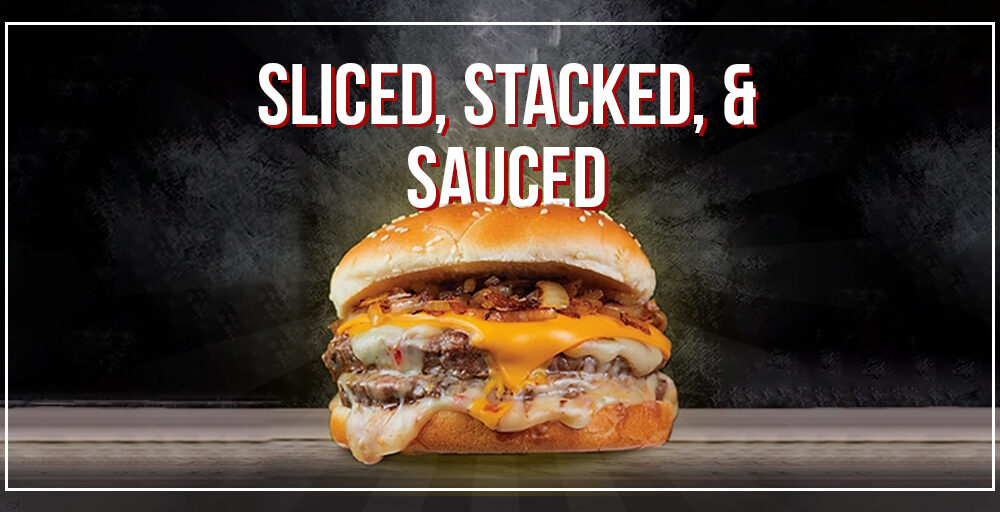
Sliced, Stacked, and Sauced: How We Build the Perfect Bite
There’s something deeply satisfying about a bite that just works. The kind that stops you mid-chew, makes you pause, smile, and say, “Wow.” Whether it’s a gourmet burger, an artisan sandwich, or a perfectly constructed taco, the magic behind that perfect mouthful lies in thoughtful construction. We’re talking about more than just putting ingredients together—we’re talking culinary architecture.
Every memorable dish shares one secret: balance. Balance of flavor, texture, temperature, and visual appeal. That’s where the trio of techniques comes in: slicing, stacking, and saucing. These seemingly simple steps hold the power to turn average into extraordinary.
In this blog, we’ll take you behind the scenes and into the details of how chefs and food artisans build bites that deliver both flavor and feeling. Plus, we’ll add layers of pro insights, practical tips, and flavor pairing ideas to help you replicate restaurant-worthy results in your own kitchen.
1. Sliced with Precision: The Foundation of Flavor Harmony
Slicing isn’t just about cutting ingredients to size—it’s about optimizing texture, improving flavor distribution, and creating visual appeal. Every slice has a purpose.
Why Slicing Matters:
- Texture: Thinner cuts create smoother mouthfeel, while thicker cuts can offer chew or crunch.
- Layer Control: Uniform slicing helps ingredients stay balanced in height and density, making bites more manageable.
- Flavor Spread: Even slices distribute taste more consistently, ensuring each bite contains a bit of everything.
Techniques to Try:
- Mandoline slicers for ultra-thin, crisp vegetable slices (ideal for slaws or salads).
- Bias cuts on proteins like steak or chicken breast—these increase surface area and enhance tenderness.
- Fine chopping for condiments and spreads ensures better fusion with other ingredients.
Pro Tip: Store sliced items separately until assembly to maintain texture and prevent sogginess.
2. Stacked with Purpose: The Blueprint of a Balanced Bite
A well-stacked dish tells a story with each layer. It’s not just about the order of ingredients—it’s about the experience they create when combined.
The Stack Strategy:
- Start sturdy: Your base should support moisture and weight. Think toasted bread, firm tortillas, or grain bowls.
- Layer by density: Heavier ingredients (meats, cheeses) go low; lighter, crispier items (lettuce, herbs) go higher.
- Control moisture: Wet elements (tomatoes, pickles) should be buffered by drier ingredients to avoid soggy bottoms.
Texture Pairings to Consider:
- Crunchy coleslaw with pulled pork
- Creamy avocado under crispy tofu
- Juicy grilled chicken with crispy bacon and fresh greens
Balance is key. A perfect stack offers variety without chaos—no one element should dominate or collapse the structure.
3. Sauced to Perfection: The Unifying Flavor Agent
A great sauce is the difference between good and mouthwatering. It elevates flavor, adds moisture, and ties the dish together.
Sauce Tactics:
- Base layer barrier: Spreads like mayo or butter on bread can shield it from getting soggy.
- Top notes: Drizzle spicy or tangy sauces on top to hit the palate first and last.
- Middle moisture: Juicy condiments (like caramelized onions or chutneys) work well between protein and cheese.
Creative Sauce Combos:
- Chipotle aioli + avocado crema
- Sweet chili sauce + lime mayo
- Garlic yogurt + hot harissa
Don’t be afraid to experiment—a unique sauce can become your signature flavor.
4. The Flavor Equation: Combining Taste & Texture Elements
Every perfect bite follows a formula, whether you realize it or not. Think of it as a sensory equation made up of five key components:
- Savory (umami) – cheese, meat, mushrooms, soy-based sauces
- Sweet – caramelized onions, honey, sweet chutney, roasted peppers
- Acidic – vinegar, pickles, citrus, mustard
- Crunchy – fried shallots, nuts, toasted seeds, fresh greens
- Creamy – mayo, soft cheese, hummus, avocado
Great dishes balance or contrast these elements. A turkey sandwich with cranberry sauce works because sweet meets savory. A grilled wrap with crunchy cabbage slaw and soft grilled chicken creates an addictive texture contrast.
5. Temperature Dynamics: Hot, Cold & Everything in Between
Temperature contrast plays a huge role in food enjoyment. Think of how satisfying it is to bite into a warm slider with cool, crisp slaw—or hot waffles with cold ice cream.
Hot + Cold Combos That Work:
- Spicy hot chicken with cool ranch
- Warm naan with chilled tzatziki
- Grilled burgers with cold pickles and lettuce
Tip: Assemble hot and cold ingredients just before serving to preserve their intended contrast.
6. Visual Appeal: We Eat With Our Eyes First
Presentation isn’t just for Instagram. A visually appealing dish invites the diner in and sets the stage for enjoyment.
Visual Layering Tips:
- Alternate colors (greens, reds, yellows, browns) for vibrant contrast
- Use fresh herbs and microgreens as finishing touches
- Drizzle sauces artistically or dot them with intention
Use a color wheel approach—pair complementary colors (like red tomatoes and green lettuce) for more appetizing plates.
7. Global Inspiration: Perfect Bites from Around the World
Different cuisines offer their own interpretations of the perfect bite.
- Mexico: Tacos with carne asada, salsa verde, onion, and lime.
- Vietnam: Banh mi layered with pickled veg, herbs, pork, and spicy mayo.
- Japan: Sushi rolls with rice, fish, cucumber, and soy/wasabi dip.
- Middle East: Shawarma wraps stacked with grilled meat, tahini, pickles, and fresh veggies.
Studying global dishes reveals how cultures use slicing, stacking, and saucing techniques in unique ways—perfect for sparking creative ideas.
8. DIY Practice: Build Your Own Perfect Bite at Home
Want to create a dish that’s balanced, flavorful, and unforgettable? Use this step-by-step checklist:
- Pick a base – sturdy and flavor-neutral
- Choose a protein – grilled, fried, or roasted
- Add contrasting textures – one crunchy, one creamy
- Incorporate fresh produce – something raw or pickled
- Layer your sauce(s) – subtle on the bottom, bold on top
- Finish with flair – herbs, spices, crispy toppings
Try it out with sandwiches, bowls, burgers, or even wraps. The possibilities are endless.
Conclusion: From Assembly to Artistry—Mastering the Perfect Bite
Crafting the perfect bite is more than a cooking technique—it’s a culinary philosophy. It’s about understanding the interaction between ingredients, respecting their textures, and maximizing their natural flavors. Whether you’re a seasoned chef or a weekend foodie, learning how to slice smart, stack with intention, and sauce creatively empowers you to build dishes that don’t just feed—but delight.
Think beyond the ingredients. Think like a builder. Each layer, each drizzle, and each placement has purpose. With the right balance of flavor, texture, temperature, and presentation, even a simple sandwich can become a standout culinary experience.
So, the next time you’re in the kitchen, don’t just cook—construct. Because when you understand how to build with flavor, every bite can be the perfect one.





